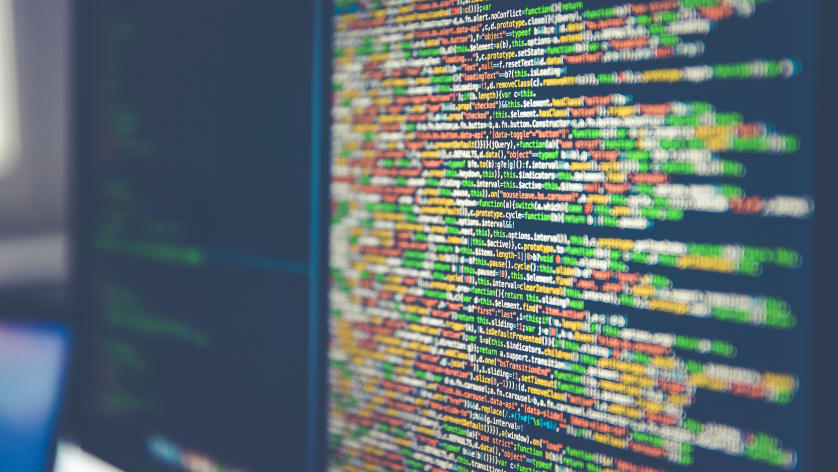What is Big Data?

Big data has the potential to revolutionize the way we live and work.
What is big data?
Big data is critical for businesses to gain insights and remain competitive. There are three attributes that make up the 3 Vs of big data:
- Volume: Amounts of data safed
- Velocity: Processing speed with which the data is analysed and processed.
- Variety: The ability to effectively manage big data is a key differentiator for businesses.
Nowadays, data is created all the time whenever we open an app, look up something on Google, or travel from one place to another with our mobile phones. The result is a massive collection of valuable information that companies and organizations need to manage, store, visualize and analyze.
Traditional data tools are inadequate for handling this level of complexity and volume, which has given rise to a number of specialized big data software and architecture solutions designed to manage the load.
WHAT ARE BIG DATA PLATFORMS?
Big data platforms are designed to handle large amounts of data that come into the system at high speeds and in many different forms. Big data platforms usually comprise of a variety of servers, databases, and business intelligence tools that allow data scientists to manipulate data in order to find trends and patterns. Looking at each of the Vs seperately gives you a good overview of what is going on on those platforms.
Volume
Big data is significantly larger than traditional data sets. To understand the vastness of the difference in scale, consider this comparison from the Berkeley School of Information: one gigabyte is equivalent to seven minutes of video in HD, while a single zettabyte is equal to 250 billion DVDs.
This is just a small part of the problem. According to a report by EMC, the digital universe is doubling in size every two years and is projected to reach 44 trillion zettabytes by 2020.
Big data presents new challenges for data handling and storage.
Velocity
The speed of creation and analysis of big data has resulted in it being described as "trying to drink from a fire hose."
Companies and organizations that can harness data and generate insights from it in real-time will have a competitive advantage.
Some forms of data can be batch processed and remain relevant over time; however, much of big data is streaming into organizations at a clip and requires immediate action for the best outcomes. The sensor data from health devices is very important. The ability to process this data quickly can provide users and physicians with potentially life-saving information.
Variety
The majority of big data is unstructured, which presents difficulties for those trying to apply a traditional model. All kinds of data, from emails and videos to scientific and meteorological data, can constitute a big data stream, each with its own unique attributes.
How big data is used
The vast amount of data available today has led to increased complexity, requiring systems that can handle various structural and semantic differences.
The use of NoSQL databases allows for big data to be stored without conforming to a specific data model. This allows for the comprehensive analysis of disparate sources of information to gain a holistic view of what is happening, how to act and when to act.
When dealing with big data, it is often classified as either operational or analytical data, to be stored separately.
Operational systems are created to serve large batches of data across multiple servers; this includes input such as inventory, customer data and purchases — the day-to-day information within an organization.
Operational systems are not as sophisticated as analytical systems and cannot handle complex data analysis or provide businesses with decision-making insights. Processes and infrastructure should be designed to maximize the collection and use of data.
Data is present everywhere, and its value shouldn't be underestimated.
Big data is used extensively in nearly every industry to identify patterns and trends, answer questions, gain insights into customers, and tackle complex problems. Organizations use the information for a multitude of reasons, such as growing their businesses, understanding customer decisions, enhancing research, making forecasts, and targeting key audiences for advertising.
BIG DATA EXAMPLES
Personalized e-commerce shopping experiences can be very beneficial for both shoppers and businesses.
- Financial market modelling
- Speeding up cancer research by compiling data points
- Spotify, Hulu and Netflix all have great media recommendations based on big data.
- Crop yield predictions for farmers
- Traffic pattern analysis
- Shopping habits and product placement
INDUSTRY EXAMPLES
Finance:
The finance and insurance industries rely on big data and predictive analytics for fraud detection, risk assessments, credit rankings, brokerage services and blockchain technology, to name a few.
Financial institutions are also taking advantage of big data to improve their cybersecurity efforts and personalize financial decisions for customers.
Healthcare:
Big data solutions are being adopted by hospitals, researchers and pharmaceutical companies to improve and advance healthcare.
With access to patient and population data, healthcare can enhance treatments, perform more effective research, develop new drugs, and gain critical insights.
Media & Entertainment
If you have used Netflix, Hulu, or any other streaming service that offers recommendations, you have encountered big data. Netflix even uses data on graphics, titles and colors to determine customer preferences.
Agriculture
The farming industry is rapidly being enhanced by big data and automation, from engineering seeds to accurately predicting crop yields.
Given the large amount of data in the past few decades, big data is being used by researchers and scientists to help with hunger and malnutrition. By promoting open and unrestricted access to global nutrition and agricultural data, groups like the Global Open Data for Agriculture & Nutrition (GODAN) are making progress in the fight to end world hunger.
More Application Areas:
- Advertising
- Marketing
- Business
- E-Commerce
- Retail
- Education
- IoT
- Sports





















